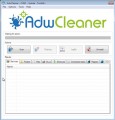The Web App is a browser extension that falls under the category of malware from web-browser hijackers family. When infected with the Web App extension, the Google Chrome browser’s settings like newtab page, homepage and search provider by default may be modified by this extension without permission. Whenever you start the browser, an unknown site appears as your start page instead of your previous homepage. All the time, while the Web App extension will be installed into Google Chrome web browser, its authors will be able to gather lots of personal info, everything related to what are you doing on the Web.
As mentioned above, the Web App extension also modifies the web-browser’s search engine. So, your browser, when searching something, will show a hodgepodge of advertisements, links to unwanted and ad web sites and search results from the big search engines like Google or Bing. As a result, actual use of a web-browser’s search becomes uncomfortable. Moreover, it can also lead to slowing or even freeze your web browser.
The Web App extension also can be used to open unwanted ads and or gather a wide variety of personal info that can be used for marketing purposes. These unwanted advertisements may be opened as pop-unders, pop-ups, in-text ads, video advertisements, text links or banners or even massive full page advertisements.
So, it is very important to clean your Google Chrome browser of Web App extension as soon as possible. The guide, which is shown below, will help you to remove Web App plugin from the Google Chrome and thereby get rid of any unwanted pop-up ads and browser redirects.
Remove Web App extension
The Web App is an extension that you might have difficulty in removing it from your machine. Happily, you’ve found the effective removal instructions in this blog post. Both the manual removal way and the automatic removal solution will be provided below and you can just choose the one that best for you. If you’ve any questions or need assist then type a comment below. Some of the steps below will require you to close this page. So, please read the few simple steps carefully, after that bookmark or print it for later reference.
Get rid of Web App plugin without any utilities
Most common browser hijacker infections may be deleted without any antivirus programs. The manual extension removal is few simple steps that will teach you how to remove the Web App add-on.
Uninstall suspicious software using MS Windows Control Panel
First, go to Microsoft Windows Control Panel and delete suspicious software, all applications you don’t remember installing. It’s important to pay the most attention to programs you installed just before Web App extension appeared on your browser. If you don’t know what a program does, look for the answer on the Net.
- If you are using Windows 8, 8.1 or 10 then click Windows button, next click Search. Type “Control panel”and press Enter.
- If you are using Windows XP, Vista, 7, then click “Start” button and press “Control Panel”.
- It will show the Windows Control Panel.
- Further, press “Uninstall a program” under Programs category.
- It will display a list of all programs installed on the machine.
- Scroll through the all list, and uninstall suspicious and unknown software. To quickly find the latest installed programs, we recommend sort software by date.
See more details in the video guidance below.
Remove Web App extension from Chrome
Like other modern browsers, the Google Chrome has the ability to reset the settings to their default values and thereby recover the web-browser new tab page, homepage and search provider by default that have been changed by the Web App extension.

- First, start the Chrome and click the Menu icon (icon in the form of three horizontal stripes).
- It will show the Chrome main menu, click the “Settings” menu.
- Next, press “Show advanced settings” link, that located at the bottom of the Settings page.
- On the bottom of the “Advanced settings” page, click the “Reset settings” button.
- The Chrome will display the reset settings prompt as shown on the screen above.
- Confirm the internet browser’s reset by clicking on the “Reset” button.
- To learn more, read the post How to reset Chrome settings to default.
How to remove Web App extension with free applications
In order to completely delete Web App, you not only need to uninstall it from the browsers, but also delete all its components in your machine including Windows registry entries. We recommend to download and run free removal utilities to automatically clean your PC of Web App addon.
Get rid of Web App plugin with Zemana Free
We recommend using the Zemana AntiMalware which are completely clean your system of the add-on. The utility is an advanced malicious software removal program created by (c) Zemana lab. It is able to help you get rid of PUPs, plugins, ad-supported software, malicious software, toolbars, ransomware and other security threats from your PC system for free.
Download Zemana Free from the link below and save it directly to your Microsoft Windows Desktop.
165511 downloads
Author: Zemana Ltd
Category: Security tools
Update: July 16, 2019
When downloading is finished, close all windows on your computer. Further, start the set up file called Zemana.AntiMalware.Setup. If the “User Account Control” dialog box pops up like below, click the “Yes” button.
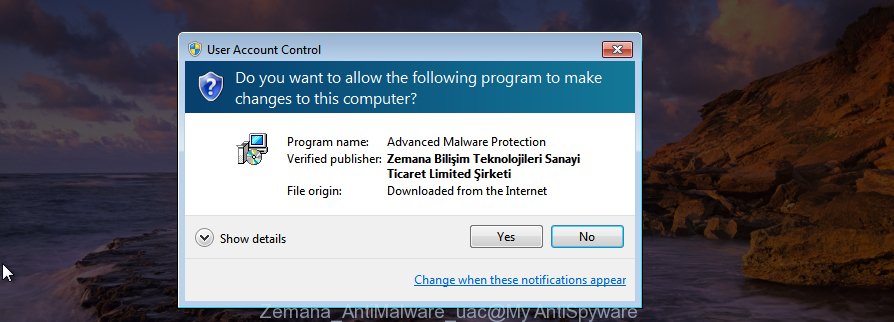
It will open the “Setup wizard” which will assist you install Zemana Anti Malware (ZAM) on the computer. Follow the prompts and do not make any changes to default settings.

Once install is done successfully, Zemana AntiMalware will automatically start and you can see its main window as shown on the image below.

Next, click the “Scan” button . Zemana Free utility will begin scanning the whole machine to find out Web App add-on that created to redirect your web-browser to an annoying web site. A scan can take anywhere from 10 to 30 minutes, depending on the count of files on your machine and the speed of your PC. When a malware, ad-supported software or PUPs are detected, the number of the security threats will change accordingly. Wait until the the checking is finished.

After the scan is done, Zemana Anti-Malware (ZAM) will open a screen which contains a list of malicious software that has been detected. Review the scan results and then press “Next” button.

The Zemana AntiMalware will remove Web App extension that redirects your web browser to intrusive web sites and add threats to the Quarantine. When the procedure is finished, you can be prompted to reboot your personal computer.
How to remove Web App with Malwarebytes
Manual Web App extension removal requires some computer skills. Some files and registry entries that created by the extension may be not completely removed. We recommend that use the Malwarebytes Free that are completely free your personal computer of add-on. Moreover, the free application will help you to delete malicious software, potentially unwanted programs, ad-supported software and toolbars that your computer may be infected too.
Download MalwareBytes Anti Malware (MBAM) from the following link. Save it to your Desktop so that you can access the file easily.
327732 downloads
Author: Malwarebytes
Category: Security tools
Update: April 15, 2020
When the downloading process is finished, close all windows on your personal computer. Further, open the file named mb3-setup. If the “User Account Control” dialog box pops up as on the image below, press the “Yes” button.

It will show the “Setup wizard” which will allow you set up MalwareBytes Anti Malware on the system. Follow the prompts and do not make any changes to default settings.

Once setup is complete successfully, click Finish button. Then MalwareBytes will automatically start and you can see its main window like below.
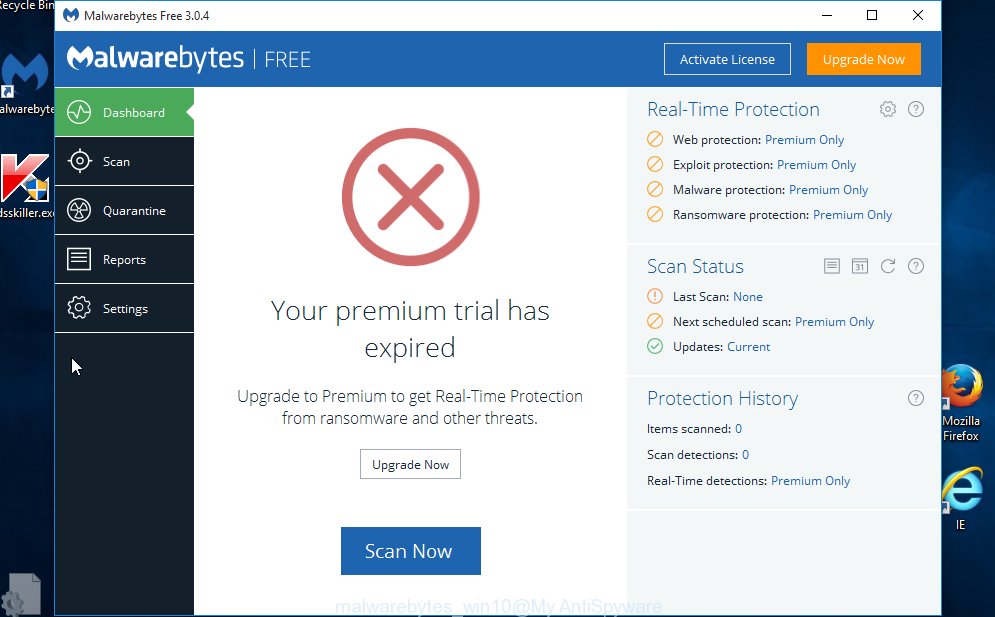
Next, press the “Scan Now” button . MalwareBytes Anti-Malware utility will begin scanning the whole machine to find out Web App add-on which modifies internet browser settings to replace your new tab, startpage and search provider by default. A system scan can take anywhere from 5 to 30 minutes, depending on your computer. When a threat is found, the number of the security threats will change accordingly. Wait until the the checking is done.
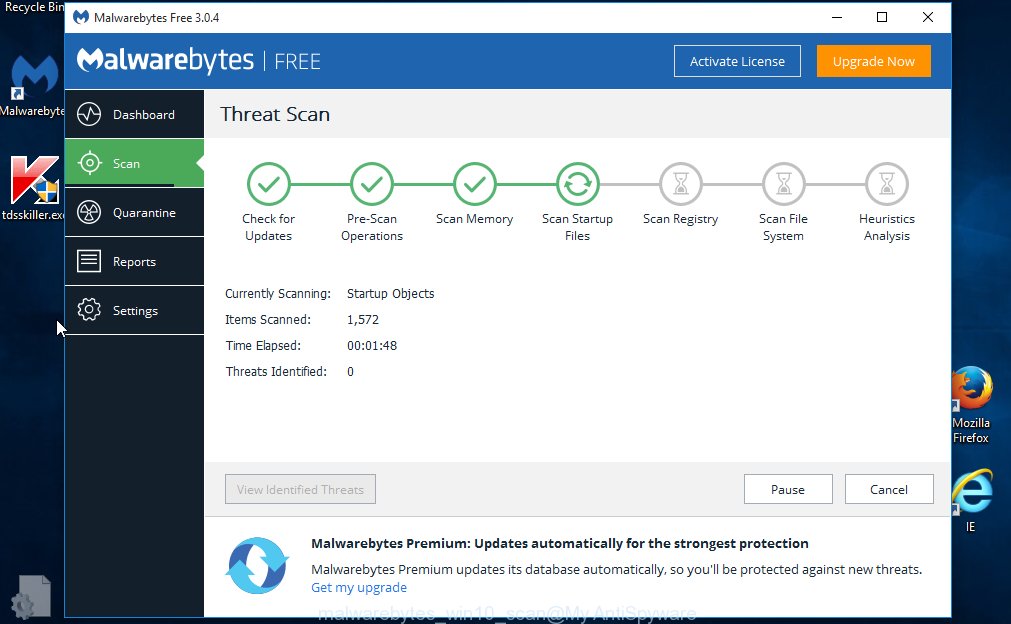
Once the scanning is complete, MalwareBytes will show you the results. You may move items to Quarantine (all selected by default) by simply click “Quarantine Selected” button.
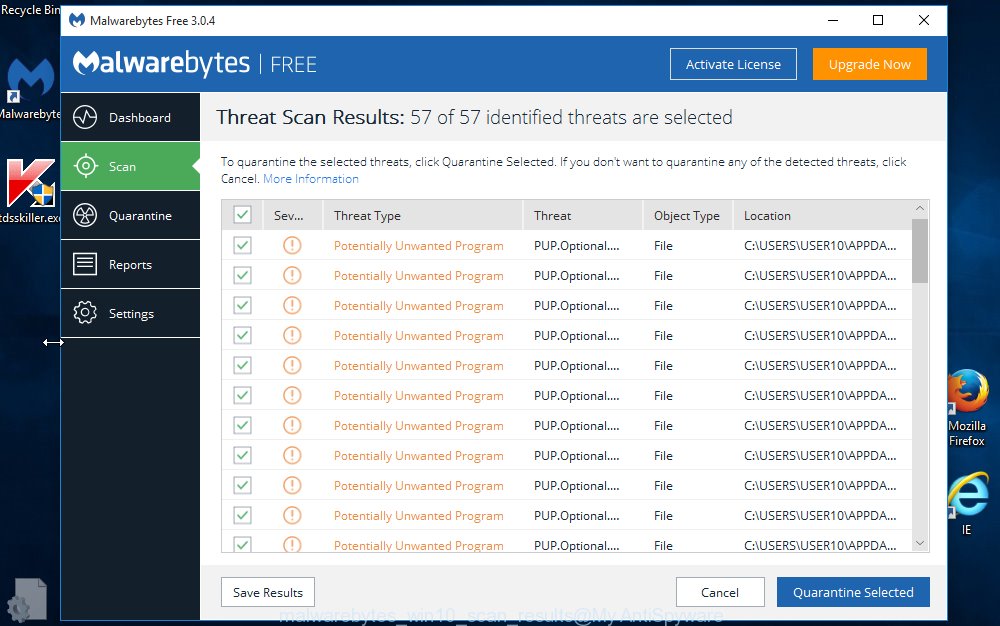
The MalwareBytes AntiMalware will remove Web App plugin which reroutes your web browser to undesired web-pages. Once that process is finished, you can be prompted to restart your personal computer. We suggest you look at the following video, which completely explains the process of using the MalwareBytes Anti Malware to delete hijackers, adware and other malware.
Remove Web App extension from web browsers with AdwCleaner
AdwCleaner is a free removal utility that can scan your machine for a wide range of security threats such as adware, malware, potentially unwanted applications as well as Web App plugin and other kinds of potential threats like malicious software and adware. It will perform a deep scan of your PC system including hard drives and Windows registry. When a malware is found, it will help you to get rid of all detected threats from your personal computer with a simple click.
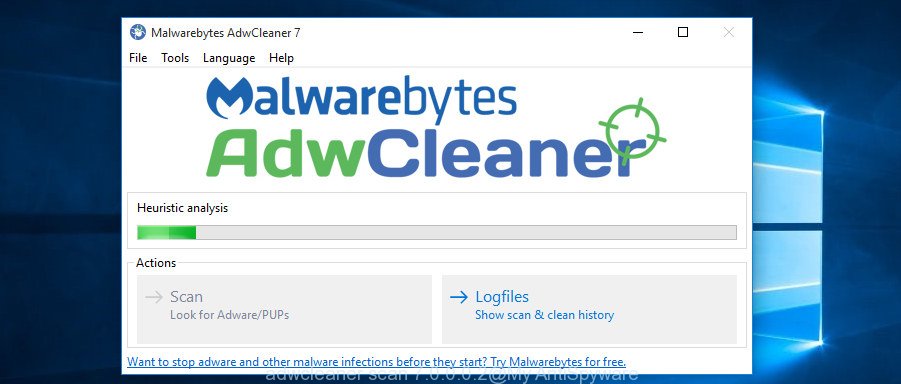
- Download AdwCleaner on your MS Windows Desktop by clicking on the link below.
AdwCleaner download
225790 downloads
Version: 8.4.1
Author: Xplode, MalwareBytes
Category: Security tools
Update: October 5, 2024
- Select the file location as Desktop, and then click Save.
- When the download is complete, run the AdwCleaner, double-click the adwcleaner_xxx.exe file.
- If the “User Account Control” prompts, press Yes to continue.
- Read the “Terms of use”, and click Accept.
- In the AdwCleaner window, press the “Scan” for scanning your system for the Web App addon and other browser’s malicious addons. This process can take some time, so please be patient. While the AdwCleaner is scanning, you can see how many objects it has identified either as being malware.
- After the scan is finished, you can check all threats detected on your PC system. Review the report and then click “Clean”. If the AdwCleaner will ask you to restart your machine, press “OK”.
The steps shown in detail in the following video.
Run AdBlocker to stay safe online
In order to increase your security and protect your personal computer against new intrusive ads and malicious web-pages, you need to use ad-blocking program that stops an access to malicious advertisements and web-sites. Moreover, the application can stop the show of intrusive advertising, that also leads to faster loading of sites and reduce the consumption of web traffic.
- Download AdGuard program from the link below. Save it on your Desktop.
Adguard download
27037 downloads
Version: 6.4
Author: © Adguard
Category: Security tools
Update: November 15, 2018
- Once the download is done, run the downloaded file. You will see the “Setup Wizard” program window. Follow the prompts.
- After the install is finished, click “Skip” to close the installation application and use the default settings, or press “Get Started” to see an quick tutorial that will help you get to know AdGuard better.
- In most cases, the default settings are enough and you do not need to change anything. Each time, when you run your system, AdGuard will launch automatically and stop pop up ads, as well as other harmful or misleading pages. For an overview of all the features of the application, or to change its settings you can simply double-click on the icon named AdGuard, which can be found on your desktop.
To sum up
Once you have complete the few simple steps above, your computer should be clean from the Web App extension and other malware. The Chrome, FF, Microsoft Edge and Microsoft Internet Explorer will no longer show unwanted page on startup. Unfortunately, if the step-by-step tutorial does not help you, then you have caught a variant of the Web App extension, and then the best way – ask for help.
Please start a new thread by using the “New Topic” button in the Spyware Removal forum. When posting your HJT log, try to give us some details about your problems, so we can try to help you more accurately. Wait for one of our trained “Security Team” or Site Administrator to provide you with knowledgeable assistance tailored to your problem with the unwanted Web App plugin.

